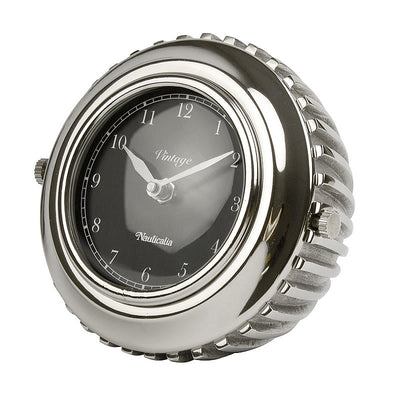Naval Origins of Our Nautical Clothing
That's what's called taking the element of surprise to extremes. This eccentric idea of uniforms was the brainchild of one Captain Wilmott. He commanded HMS Harlequin and dressed his men accordingly. But not appropriately as far as the Admiralty was concerned. Which is why in 1857 they finally issued a circular detailing enlisted men's uniforms.
True blue
These were to be blue simply because with the acquisition of India we had access to plentiful supplies of indigo - a plant from which a dark blue dye was obtained. And indigo dye was colour-fast - in prolonged sunlight and heavy rain. Already the most powerful maritime fighting force in the world, the Royal Navy was now smartly dressed in a style that had immediate influence on civilian fashion.
It began with Prince Albert Edward. The Queen's eldest son and heir was dressed in a replica sailor suit to wear on board the Royal Yacht. What the four year old future king thought of this is not recorded, but Society in general was smitten. And sailor suits with various adaptations remained popular for over 80 years.
Why keep it simple?
Now everyone knows what is meant by a 'sailor suit'... except the navy. As far as they're concerned the term is far too vague. Uniforms are numbered from 1 to 5 with various sub-divisions A to C. In addition there's Ceremonial Day Dress for senior officers. And if that sounds complicated, the term sailor isn't strictly correct either. Ratings, crew, ship's company and men (up until fairly recently) have all been used, but for many years the Admiralty-approved term was 'men dressed as seamen'. Which reminds me of a story I heard from a retired naval officer.
Buttons and bows
A destroyer was due to be inspected by an admiral. The ship had been scrubbed and scoured, polished and painted from the masthead to the waterline. The admiral's launch was due in twenty minutes. Below decks the crew (sorry, men dressed as seamen) were busy dressing as seamen - 1A uniform to be precise. A chief petty officer - known out of his earshot as Chrome Dome due to his completely bald head - was about to put on his hat when the chin strap came loose. There was no time to stitch it back so he took a length of black ribbon, tucked it under his chin and tied it in a bow on top of his head. Then he put his hat on top and fell in on deck.
Everything went well until a gust of wind sent his hat rolling into the scuppers. Standing rigidly to attention he hoped he wouldn't be noticed amongst the ranks. A vain hope. The admiral's inspection complete, the officer on parade gave the order: 'Men dressed as seamen, dismiss'. Followed immediately by: 'Men dressed as Easter eggs, stand fast'.
It's not what you think
Is the story true? I don't know, but it ought to be. Like a lot of myths about the navy. For instance the three stripes on a sailor's collar (yes I know, but that 'men dressed as seamen' business is a bit cumbersome). Legend has it that they signify Nelson's three great victories - at the battles of the Nile, Copenhagen and Trafalgar. Not true. Just the whim of an unknown sea lord. Or the large collar itself. Was it to protect the tunic from getting soiled by the tarred pigtail? Apparently not - that particular hair style had vanished by 1827. The uniform collar wasn't introduced until several decades later.
Adopt and adapt
Even the story behind the blazer is mired in controversy. One school of thought reckons it was derived from the striped jackets worn aboard HMS Blazer prior to 1857. The other claims it originated with the Lady Margaret Boat Club - founded in 1825 - by twelve members of St. John's College, Cambridge. Agreement, it would seem, is still some way off. Never mind, whatever its antecedents the blazer has gone from strength to strength and is now one of the most versatile jackets in the wardrobe. Semi-formal or smart casual, with chinos or jeans, it has a style that defies the caprices of fashion.
You wear it well
Reefer Jackets have the same timeless appeal. Originally designed for midshipmen clambering in the rigging, the short length and roomy cut ensured maximum ease of movement. Features that are appreciated today in much less hazardous conditions. The design of the T-shirt - if not its material - was borrowed from the Navy and yachting caps provide protection from the elements together with a certain jaunty style. But discretion is important. There's something awfully risible about a man at the tiller of an outboard on the Thames wearing a cap adorned with enough 'scrambled eggs' to satisfy several hungry commodores. As for bell-bottoms... well every fashion family has its black sheep.
Fashion faux pas
Those of us old enough to remember the 1970s still recoil in horror at the thought (and even worse the sight, in family photographs) of loon pants and flairs. The way those things used to flap in the slightest breeze. It was like riding out a force 8 in a tea clipper. Purely functional, bell-bottom trousers were designed for easy rolling up when swabbing the decks and like bo's'n's whistles are best left to the professionals.
But just in case the Senior Service feel a bit smug, even flairs were better than harlequin outfits...




